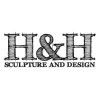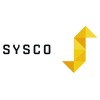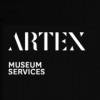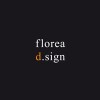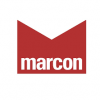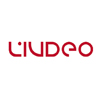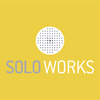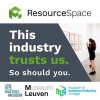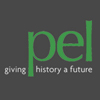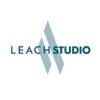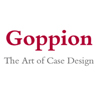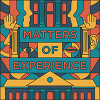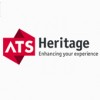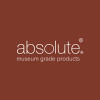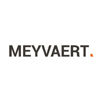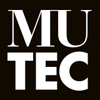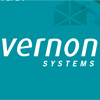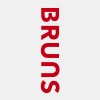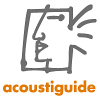
Linda Duke on the need for museums – art museums, certainly, but other kinds of museums as well – to be clear about the role they play in providing and raising consciousness of aesthetic experience for the public. Aesthetic experiences are important opportunities for knowing the complex and often ambiguous world in which we live.
About the author: Linda Duke is Director of the Marianna Kistler Beach Museum of Art at Kansas State University. Between 2003-2011 Linda was Director of Engagement at the Indianapolis Museum of Art and prior to that Director of Education at UCLA Hammer Museum in Los Angeles. Linda is interested in better understanding the role of aesthetic experience in learning, development, and the quality of human life. She sees art museums as important sites for exploring these matters, in partnership with universities, schools, and community groups.
In this essay I’d like to bring together some ideas, observations, and realizations that have been churning in my mind with ever greater urgency during the years I have worked as an art museum educator. This cluster of ideas has implications for many of the tasks museum educators perform on a daily basis: planning gallery programs, talks, performances, and art-making activities; editing labels and advising on installation designs; and developing evaluation tools to assess the effectiveness of all of these. My essential thesis regards the nature and significance of “aesthetic experience” and “aesthetic thought,” and the need for museums – art museums, certainly, but other kinds of museums as well – to be clear about the role they play in providing and raising consciousness of aesthetic experience for the public. By “public” I mean schools and teachers, but also families and life-long learners of any age. The urgency of this effort to speak clearly about the nature and value of aesthetic thought and experience is derived from the challenge it offers to the hegemony of received verbal information in our schools and in mainstream American culture more broadly. Readers more familiar with these matters in other English-speaking countries can judge for themselves the relevance of my views to those societies.
Many public educational systems in the United States have eroded basic human capabilities to learn and know in non-verbal ways. This erosion has been effected in part by explicitly mistrusting and diminishing the value of learning and knowing non-verbally, and in part by simply ignoring such knowledge in favor of indexical verbal information. The overwhelming bias toward received information has been devastating for children and learners of all ages whose talents lie elsewhere, and the squandering of their talents by society has been society’s loss. The bias has implications that extend beyond innate learning styles to matters of cultural diversity. Some cultures accord more importance and recognition to embodied knowledge domains such as skillful movement or an acute refinement of the sense of hearing or vision, for example.(1) This criticism of mainstream education should not be interpreted to imply that verbal information is unimportant or less important in the learning process than other ways of describing and exploring the world. I will argue here that the development of a vigorous, on-going connection between verbal and experiential knowledge is characteristic of confident critical thinking and creative living.
The role of museums
Museums have a unique role to play in correcting the imbalance in current ideas about learning, understanding, and knowing because their collections provide especially rich opportunities for connecting experiences with language. Museums should be places where people are encouraged to learn from and reflect upon encounters with material objects – natural objects and those shaped by human intention. Museums hold and display these objects, and their curators and educators are attuned to helping people look at and think carefully about them. Museums do these things, but I suggest that they need to do them more assertively and confidently, and that they not be shamed and pressured to become more information-centric, or to adopt “learning objectives” indistinguishable from those embraced by many schools. Museums should lead efforts to demonstrate the importance of linking experiential and object-based learning with language. Museums can provide optimal arenas for developing a conscious and fluent exchange between material experience and language. Museums are certainly not the only places to have aesthetic experiences, but they can be places where such experiences are explored and made explicit.
“Museums have a unique role to play in correcting the imbalance in current ideas about learning, understanding, and knowing because their collections provide especially rich opportunities for connecting experiences with language”
As a veteran art museum educator, I have come to consider “aesthetic” those experiences and meaning-seeking thought processes that allow humans to embrace complex, dense, and ambiguous data sets, both sensory and verbal. I recognize that my definition steps beyond traditional ones that involve standards of beauty. It intentionally opens the range of aesthetic experience to include forays into domains such as science and history, and also the most ordinary transactions of daily life, such as gardening, cooking and enjoying food. Aesthetic experiences invariably have sensory components; they are embodied experiences that at times provide insight and inspire wonder. Museums must find new ways to document and assess the public value of aesthetic experience because it is key to the kind of learning that goes on in their galleries and programs. In the current educational culture of high-stakes, standardized, multiple-choice tests, this learning remains undervalued and even unrecognized. In the parlance of identity marketing, the term “aesthetic” itself has an image problem.
Aesthetic experience as embodied experience
During the fall of 2009, I was fortunate to be able to spend a few weeks in residence at the American Academy in Rome, Italy. Equipped with a digital voice recorder, I interviewed a number of the Academy’s current residents and staff members, extraordinary people all. Interviewees included Rome Prize-winning visual artists, musicians, and scholars, as well as gardeners, chefs and culinary apprentices. I asked them each to describe or muse upon a recent “aesthetic experience.” I suggested that they should feel free to apply that term as they saw fit and I got some interesting responses. Experiences with architecture and with the layered complexity of the city of Rome itself came up most frequently in conversations with the full range of community members. In all cases, the aesthetic nature of the experience was multi-faceted. The forms, scale, and décor of buildings and ruins were described; but the aesthetic experience often including music or other sounds, scents, qualities of light, the gestures of people, and very often connections with history or literature known to the speaker. Of course people also spoke about encounters with paintings or sculptures. However, experiences with food and drink almost rivaled architecture in the number and intensity of descriptions. Metaphor and symbolism played roles in describing the richness of interviewees’ encounters with food. The Academy’s executive chef described the joy of picking apples with sunlight streaming through the leaves. She delighted in the pentagram of seeds seen when an apple is sliced cross-wise, and connected this with a basic form in Roman architecture. People directly involved with the Academy’s innovative Alice Waters-inspired food program(2) were by no means the only ones who had aesthetic experiences with food. Art historians and scholars of antiquities described nuanced experiences with bean soup and hot chocolate.(3)
In most of these conversations, it was clear that what people called “aesthetic experiences” were never simple, even if they appeared so before being “unpacked.” They were multi-sensory(4) even when the primary catalyst was mono-sensory. Visual experiences, for example, often required likening to or evoked memories of other senses. Descriptions required back-tracking and supplemental additions to round out the telling of them. These were experiences that at moments challenged their narrators to find appropriate words, and were not easily conveyed in a simple sentence.(5) Given that the subjunctive isn’t used as much these days as in past times, even the requisite grammar was challenging. Phrases such as “almost as if it were….” became necessary.
In each case people seemed to consider the effort worthwhile and most of the interviews, even the very short ones, were curiously moving experiences – certainly for me, and I believe for the interviewees as well. I had invited people to talk about something that would ordinarily be unvoiced and, because unvoiced, also undervalued.
An intriguing relationship between high ability and what is typically considered disability emerged in several interviews. In other words, people sometimes used a term associated with abnormality to describe an aesthetic experience. During the interviews several of the artists referenced synesthesia – the experience of sensory chords being struck, such as sensing colors or other visual effects while listening to music. Even without using the term synesthesia, people resorted to vocabulary related to other senses in describing an effect of the visual. Artists also shared personal experiences with dyslexia or Attention Deficit Hyperactivity Disorder (ADHD) in their younger years and reflected on the ways their highly visual and sensory modes of knowing the world had at times put them at a disadvantage (in rigidly structured schools), and at other times allowed them to accomplish complex feats. One painter spoke at length about the condensed meanings he finds in “simple” geometric shapes and their relationships. This interview became a recounting of what I would term intense “aesthetic research” by him over a period of many years. Not that this work was unrelated to standard scholarship and written history, both of which were important to him; but it was driven by visual aesthetic insights. More than one artist, each in his or her own hard-found words, talked about art as material and sensory philosophy – about making as a kind of thinking, about the ability of material “things” to embody knowledge.(6)
Thinking about thinking
Listening to the people I interviewed at the Academy seemed to confirm a hunch I’ve had for some time: some of us are more inclined to think in words, others not so much. I remember the gratitude I felt when I first encountered the writings of both Temple Grandin(7) and Ron Davis(8) on visual and non-verbal thinking. Personally, I am not conscious of thinking in words most of the time. I can think with words if, for example, I am planning how to say something; but ordinarily I have no sense of thoughts being words. In fact, I am sometimes conscious of the effort entailed by bringing complex ideas to language. That process can feel as frustrating as attempting to describe a dream that seems to slip away just as one strives to recall it. Perhaps most of us have the ability to think both ways, but a tendency that goes to one or the other.
“Looking, thinking, wondering, and discussion, when skillfully supported, can provide challenge and pleasure for museum visitors”
In writing about the visual thinking that she and other autistic people experience, Temple Grandin has advocated intensive work on language for autistic children. She credits that effort during her own childhood with the ability she has found to express her keen intelligence in her work. In her case, one might say the strong interface between non-verbal thought and language has made the difference between serious disability and high-level function – even genius. Ron Davis has argued convincingly that so-called visual thinking is so much faster than verbal thought that many people are not conscious of images. These are the people, he says, who are unable to easily describe how they think. As for non-autistic people, neither writer assumes that being a non-verbal thinker necessarily connotes a lack of skill with language or a lesser affection for it. When the interface between non-verbal thought and language is highly functional, creative language usages and highly evocative descriptive abilities can be enhanced. I suggest that it can be equally empowering for intensely verbal thinkers to cultivate greater awareness of and connection with visual and other sensory input. Looking, thinking, wondering, and discussion, when skillfully supported, can provide challenge and pleasure for museum visitors of many persuasions.(9) There is already some evidence that well-designed experiences in museums can be growth-inducing for a wide range of children.(10)
The Embodied Mind at Work and Play: Museums as Mental Gymnasiums
I like to use the phrase “mental gymnasium” to evoke the kind of exhilarating activity I believe museums can provide. In using this term I don’t intend the kind of frenetic activity some museums encourage, especially for children and as part of a widespread contemporary dread of “boredom.” The abilities to look carefully, reflect and wonder, or to be fully present in the moment, are neither fostered nor acknowledged when fast-paced stimulation and superficial interactivity are the priorities of museum installation design. Issues of technology and interactivity are especially tricky in art museum galleries, where looking, thinking, discussing, reconsidering, etc. ARE the interactive experiences most works of art invite. This is not to say that informative videos or handheld gallery tour experiences are not valuable. However, care must be taken to avoid pitting the work of art against these inherently compelling technologies. Works of art require our attention and effort. Their “voices” cannot be replaced by explanation without avoiding the aesthetic experience itself. A handheld can offer thoughtful and provocative information about the object or its maker. This information is not the same as each visitor’s encounter with its presence and may, at times, lessen the chances a visitor will have that encounter. In general, information about a work of art can enrich, but is not and does not provide aesthetic experience.(11)
“I like to use the phrase “mental gymnasium” to evoke the kind of exhilarating activity I believe museums can provide”
Museums can play a role in articulating the value of aesthetic experience, broadly defined and existing largely outside the tame and logical structures of ordinary verbal language – poetic and other artistic uses of language excepted. Museums can and should offer visitors opportunities to develop non-verbal skills as well as the wonderfully empowering ability to join experience with language in programs that foster discussion and description. They should offer these to the public as life-long learning opportunities, and to students in partnership with schools as a balance and corrective to the overwhelming emphasis on received verbal information. New kinds of assessments must be developed to define aesthetic experience as public value, so that museums can become adept at documenting and advocating the embodied, sensory-intellectual nature of their work.
Aesthetic experiences are not effete or irrelevant, but are instead important opportunities for knowing the complex and often ambiguous world in which we live. Perhaps one might say we think aesthetically when the data set is so complex and some aspects of it so ambiguous that more linear, simply logical ways of thinking alone cannot do the job. When logical steps have discovered seemingly insurmountable contradiction, an aesthetic insight is one that offers a new and expanded frame of reference. This is creativity and discovery; it can and should happen in museums.
Linda Duke
Director, Marianna Kistler Beach Museum of Art, Kansas State University
(prior Director of Engagement, Indianapolis Museum of Art)
In memory of landscape architect Ed Blake
Notes | References | Bibliography
1. Brenda Farnell is an anthropologist and expert on non-verbal knowledge traditions in Native American cultures. She is the author of Do You See What I Mean?: Plains Indian Sign Talk and the Embodiment of Action (1995, paperback 2009). Speaking with Farnell years ago at the University of Illinois, and reading her papers, first directed my attention to the ways bodily knowledge is marginalized in contemporary American culture. Francisco Varela, the late Chilean neuroscientist and philosopher of science, published The Embodied Mind: Cognitive Science and Human Experience (co-authored with Evan Thompson and Eleanor Rosch) in 1991. Discovering this book in the late ‘90s was pivotal for my own nascent thinking about learning, consciousness and experience.
2. In 2007, chef and local food advocate Alice Waters began helping the Academy revamp its approach to food. She created the Rome Sustainable Food Project to build a network of local farmers practicing sustainable agriculture and animal husbandry, artisan cheese makers, and others. She chose executive chef Mona Talbott and chef Chris Boswell to head the Academy kitchen and oversee an ever-changing roster of interns from various culinary schools. The dining table once again became the warm heart of the institution, with delicious meals prepared from honest ingredients that invite members of the Academy community to gather and linger for conversation across disciplines. http://changeobserver.designobserver.com/entry.html?entry=13758
3. Excerpt from Oct. 19, 2009 interview with art historian Lauren Kinnee: I am going to talk about my aesthetic experiences with food here, beginning with today’s lunch – in particular, the beans. I feel a little bit like when I talk about food… Food is something that I’m very interested in but it’s a different sort of aesthetic experience from what I’m used to with visual aesthetics. And sometimes I feel like words fail me, but I am not willing to let them fail me because talking about this stuff is what I do, in aesthetic terms. So let’s see what we can get. I think the key to the bean dish today was the contrast in texture between the sort of smooth and creamy beans which were… I mean, with the bean is some sort of a grain to it, especially if you are cooking from dried beans. As you bite into it, you can sense different gradations of that. But in these, it was so perfectly cooked that there was no gradient or real texture. It really had this consistent smoothness to it…… There was like a balance going there in terms of not just texture, but you have that kind of mellow – almost a nuttiness to the sort of mellow buttery, nutty bean flavor. And the same thing with the bread which is another mellow flavor, contrasted with the sharpness and bitterness and acidity of the tomato and the chard, …. so it’s like the entire dish is about contrasts. It was fun.
4. Excerpt from Oct. 19, 2009, interview with art historian Susanna McFadden: …. the Pantheon, which is one of those emblematic places in Rome and of Rome, is actually still a working church. And I think that was the first time I consciously realized that fact. We went to the Pentecost services there, and at the end of those services, rose petals were thrown down through the oculus of the church/Pantheon. And this was the most spiritual experience I ever had because of the visualness of it. That vision of rose petals floating down, and the sunlit beam through the oculus onto the congregation below was about the closest thing I’d ever had to an encounter with some aspect of the Divine. And the fact that it was in the Pantheon, which itself is the one of the most beautiful buildings ever constructed and, once experienced, it was an aesthetic experience of the space itself …. In my mind, that has always been tied to an emotion that I feel was almost inevitable and indescribable when I entered that space. It’s palpably sacred. And to me, when I say sacred, I don’t mean Catholic or pagan or whatever. It’s just that there is something about that space, and so that added experience of the blood red roses that were sort of floating down was unbelievable. And then, to make it even crazier, at the end of the service, the clergy walks out of the space along a red carpet that’s cordoned off on either side. And somehow, because of the crowd, I got pushed up against one of the cordons. And I don’t know if it was a cardinal or a bishop, but one of the clergy walks by me. He reaches his hand up and plucks a rose petal out of the air and caresses my cheek with it, and then hands me the petal. And that… again, that moment of sort of tactile convergence between Catholicism and sacred space and just the surreal experience of it all happening within this great pagan building was something I will never forget. And I think it also hit home that I loved Rome, and I had to be there.
5. Albert Rothenberg is a psychiatrist and long-time member of the faculty of Harvard Medical School who has written extensively on the nature of creativity. His book Creativity and Madness (1990) is based on interviews with dozens of writers, artists, scientists, and poets. Rothenberg proposed two basic qualities of creative thought that are common to science and the arts. The first he called janusian processes or janus thinking. It involves the accommodation of paradox and contradiction, and often leads to insights that transcend the perceived incompatibility of a given set of facts. The second he called homospacial thinking; it is characterized by the ability to imagine two separate actions or objects located in the same time and place. Rothenberg’s ideas prompt immediate associations with both theoretical physics and the arts.
6. Excerpt from interview Oct. 12, 2009, with artist Stephen Westfall: I think that painters are art historians, and in fact, it’s been very important to me to assert that art is a form of material philosophy. Excerpt from interview Oct. 23, 2009 with artist Terry Adkins: So I guess just there’s a mystical union between the maker and the made thing. It doesn’t allow me to then back off and call anything I make an object. It is either a work of art or it is not. And I believe that “object,” even though it’s a Hussserlian term and all this, is a big misnomer. I mean, I think it’s come through slothful use to mean anything that’s not a painting in fine art. And I don’t believe that it is a proper description. There’s no way that having this union with this thing, I could then step back and have the subject/object, dichotomous relationship with it. I am still becoming as it becomes. Excerpt from same interview with Adkins: Terry: Well, I think today [information] is almost like lead. I think that the quantification of information that is not transformed by virtue of experience into knowledge just becomes a whole bundle of more stuff. / Linda: I was talking with Jon Calame the other night and we were calling that intellectual materialism. / Terry: OK, yeah. I would agree, it has the potential to be something. But until knowledge is acquired, it’s not amassed. It’s acquired through experience. So yeah, intellectual materialism is a good way to describe this glut of things.
7. Temple Grandin is an autistic woman and one of the most respected animal scientists of our time. She is the author of many professional articles and several books for general readers, including Thinking in Pictures (1996), Animals in Translation (2006), and Animals Make Us Human (2010). Grandin’s articulation of her experience as a highly intelligent non-verbal thinker has perhaps done more than the work of any other public figure to bring attention to the diversity of human thought processes.
8. Ron Davis is a dyslexic man whose extraordinary insights into this condition, so prevalent among readers of languages with alphabetic writing systems, led him to discover that its true nature is not so much disability as a learning difference associated quite frequently with giftedness. He has written The Gift of Dyslexia (1997) and The Gift of Learning (2003).
9. Abigail Housen is a cognitive psychologist whose research on aesthetic thinking led her to propose a developmental model for growth in the capacity to find meaning in art. In partnership with her long-time colleague Philip Yenawine, she has developed thoughtful, discussion-based teaching strategies (Visual Thinking Strategies or VTS, www.vtshome.org) that support natural growth and the development of a range of skills that are not addressed in information-based instruction. VTS is used in art museum galleries and in schools as an image curriculum and professional development program for teachers.
10. For links to PDF’s on several studies of VTS in museum-school partnerships see: http://vtshome.org/pages/major-findings
11. It must be acknowledged that some artists are very interested in the ways people interact with information and have arguably made these interactions into aesthetic experiences. David Wilson’s Museum of Jurassic Technology in Los Angeles is an example of a place where intense research driven by aesthetic concerns is delivered to the public in ways that maintain absolute allegiance to those concerns.





